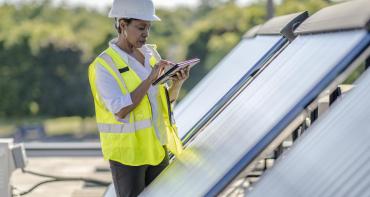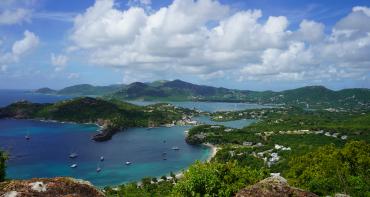Seventy-one per cent of the Earth's surface is covered by water, and some forward-looking fashion designers think it could be a new frontier for their industry.

Seventy-one per cent of the Earth's surface is covered by water, and some forward-looking fashion designers think it could be a new frontier for their industry.
They're convinced that oceans, seas and lakes have untapped potential that could give fashion a 21st Century makeover.
Jackets made from fish skin, skirts of seaweed and accessories adorned with shiny fish scales were just some of the unconventional outfits modelled at the new-look Blue Fashion event in Nairobi, Kenya.
The fashion industry is one the largest polluting industries in the world and so-called 'fast fashion' brings with it many hidden environmental costs.
So, designers and producers inspired by the marine environment and supported by the Commonwealth as part of its work on the blue economy - in partnership with FAO and the Nordic Atlantic Co-operation - were determined to make a splash with their colourful, creations, sourced sustainably from beneath the waves.
Designer Deepa Dosaja's range of clothing and accessories titled "Conscious" received rapturous applause from the audience.
She said: "This year we have dived even deeper to understand both the social and environmental impact that fashion has on our planet.
"The dyes we use can be very hazardous to marine life as well as the micro plastic fibres used in the production of synthetic fabrics. Not to forget the harmful pesticides and chemicals used to produce these fibres.
“By 2020, we are committed to using sustainable GOTS (Global Organic Textile Standard) certified fabrics and environmentally-friendly adornments for our collections," she added, as a model wearing her signature fish skin leather jacket paraded up and down the catwalk.
Blue Fashion showcased the talents of four designers who worked with fish skins and scales provided by Victoria Foods, and were by-products of their manufacturing process.
Blue Fashion video with Barbara della Rovera - Landscape
Daniel Hatton of the Commonwealth Fashion council said: "This particular project shows the willingness of manufacturers to seek new financial models.
"Victoria Foods have identified a new market and adapted their business model to enter the blue fashion market. This has enabled women and youths to learn new skills and allowed the region to diversify its work force towards the blue agenda creating wealth and opportunity".
Jeff Ardron, who leads the Commonwealth Blue Charter initiative, was impressed by the level of ingenuity and innovation on display.
"The local designs, models, and materials, brought the blue economy message to the conference in a very tangible way," he said.
"And the delegates loved it."



